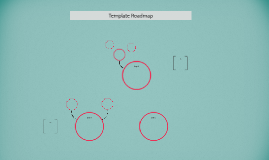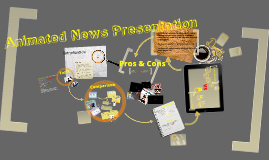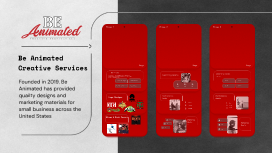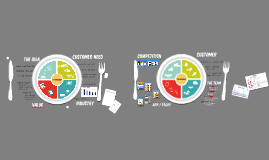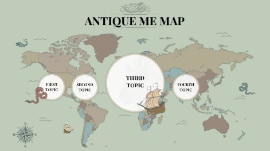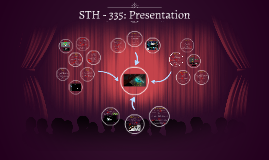Animated Graphics: Presentation
Transcript: Animation II: Rigging We all contributed to different aspects in the areas of modelling and animation Texturing Animation I: Motion Paths Opening credits research into sci-fi genre, specifically ones that involve space scenes (Star Trek, Alien etc). Nothing developing on the screen = text is placed centrally = full audience attention (Alien) Some kind of scene ensuing = credits nearly always placed in the corner (Star Trek). We applied the latter - more chance to showcase! Key-framing When it came to more intricate movements like the ship landing in a hangar, it was more effective to use keyframes to simulate typical pilot behaviour, air resistance and hovering. Motion curves For simple ship movements, we attached them to cubic curves that could be customised using 'control verticies.' Purpose Research James Bishop: Motion, MAYA cinematography After Effects After Effects It also allowed us to get an impression of speed, and in one case a time warp was applied after a playblast showed the sequence was going way too fast. Camera rigging: A camera was rigged to a spaceship and could be panned or zoomed through keyframing, without disturbing the motion path of the camera. Shot Composition STH - 335: Presentation Modelling On the whole, we worked to each other's strengths within the software. These included but were not limited to... Adobe After Effects We imported all of the rendered frames from MAYA onto After Effects, importing it as an image sequence as opposed to video media (cut down exports - retained quality). We could then assemble the sequence and apply sound and any desired colour grading. Directional Lighting was used particularly in the hangar scene to create shadowing below the balconies. PC cores Under the batch render settings, we unticked 'use all available processors'. We then set the number of processors to use to 8 cores. This made the most of the PC's performance. Deformers We also used 'bend' found in under the deformers > non-linear tab for the corridor, and the wings of the smaller starship. A lattice was used to change the verticies of these wings to allow for tapering inwards as the wing got further away from the body. Sound Tron Legacy OST The Grid, Daft Punk Featuring narration from Jeff Bridges Application Space sphere Hangar surfaces Bump Mapping Control rig: Drew a clear linear curve and anchored it to the animated object using parent and scale constrain. This allowed for further object animation whilst it followed its motion path. Animation III: Particles We used the following render settings: Camera Sequencer Using the CS allowed for an overview of all shots, and how they would fit together with cuts at certain points to form our sequence. Ambient Lighting was used to light the 'space' sphere interior, rather than multiple lights (easier workflow). Shadowing We've shadowed parts of our spaceships, influenced by our research into Star Wars ship lighting. Rendering Post Production & Sound Insert Edge Loop Connect Components Merge Merge vertex Chamfer Vertex Bevel Not too much colour correction was required because in MAYA, the colour selection is absolute. However, grading allowed us to change the feel of the sequence as a whole. Title sequence Using a nucleus and a volumetric node passing over the main title text, we uncombined all faces and polygons to simulate the particle 'shatter' effect. Planar mapping With the hangar, there was an initial problem with the textures being stretched across certain faces. To ammend this we highlighted the appropriate faces, then used planar mapping, (under Create UV's tab) to ammend the height/width ratios with the textures. Thank you for listening The bright blue glow applied to a duplicate of the text (to shine through once the particle distortion occurs) sets the theme for the sequence, influenced by the Tron series. Credits Bourne Legacy style titles Off-centre to maintain audience focus Gravity turned off, force turned up high Modelling Animation III: Rigging Banking: Content Research Da Vinci Resolve Luma Curves Saturation Masks Point Lighting One light source going in infinite directions Useful for simulating a sun Customizability allowed for shadowing Crew Roles Camera Keyframing 'Freedom' approach to filming, rarely used motion curves or 'camera aim'. Instead, keyframed the camera's position, rotation and focal length. Colour Management Influences Robot Wars title, Star Wars, Aliens Faiz Barber: Lighting, Colour Correction Render engine: Mental Ray Image format: Uncompressed tif Image size: 1920 x 1080 Shot dynamics Treated the sequence like a short film, with variation in shot types. Moved cameras around in perspective view, with a camera view panel for easy framing. James Dominey: Texturing, After Effects Playblasting An effective way for us to preview the sequences as a whole. Playblasting straight from the CS meant that MAYA knew when to cut from one camera to another. Combining polygons Our more complex objects, such as the hangar






